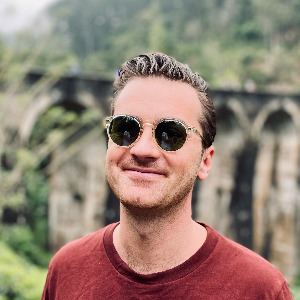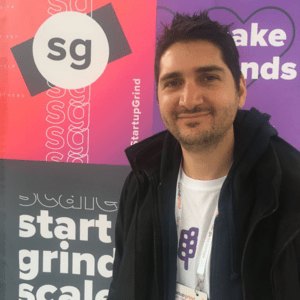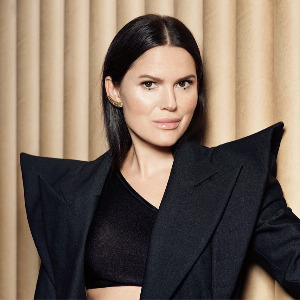I’m a computer engineer transformed into a ⚙️ passionate No Coder ⚙️. Reach out if you want to get introduced or learn more about the No Code world!
It’s not so complicated: Positioning and branding for startups
The top 3 mistakes when it comes to positioning and branding are:
- not knowing who you are and as a result confusing customers
- not maintaining brand consistency across the board
- not having the courage to make new choices
In just 15 min, Marc Meyer is sharing with us his experiences in the domain.
You’ll hear about:
- the “symbiotic relationship” between positioning and branding
- the top mistakes in the domain
- the good and the bad news about startups
- April Dunford’s framework for positioning a company against competitors
Tools mentioned:
- Usability Hub to test your messaging through 5-sec tests
Shoutout to April Dunford for her work in the field.
Transcript
Marc Meyer: Hi. I’m Marc Meyer, originally from the beautiful city of Amsterdam, and currently living in the equally cool city of Dubai for almost one and a half years now. My background is in tech, where I’ve worked for companies small and large, from scaleups, to huge corporates. And, yeah, I was responsible for everything commercial in between marketing and sales. Currently, I’m the Chief Commercial Officer at trans metrics, which is an AI platform focused on logistics. And in deposition, I deal with ecommerce clients as well as logistics service providers.
Spyros Tsoukalas: Marc, welcome to the GrowthMentor podcast, we are excited to have you here to discuss about positioning and branding for startups, which is a not so complicated topic, as we will figure out today, you know, so let’s cut to the chase, could you tell us something we don’t know about positioning and branding?
Marc Meyer: Yeah, well, I don’t know how many people notice. But I’ve noticed for the past two years, or something that, you know, everybody thinks that they’re unique. But in fact, everybody’s copying each other all the time. So when you zoom out in a particular industry, and you know, for example, tech, everyone is now realising that most consumers like to be treated well as people instead of this school approach. So using easier language, and a more relaxed look and feel has become the new standard. And that’s especially true for B2B marketing, where branding and positioning have always been very traditional. So what I like these developments a lot, I think that the downside is that everybody’s now more or less doing the same thing. And the irony there is obviously that the main goal of positioning and branding is actually to stand out from the crowd, right? So I would say that, you know, instead of reading up on guys, and how to’s, which influenced you a lot, you know, in the process. I would say that the best thing you can do is to take a long walk and actually think about what it is that you want to say. The most authentic things always come from, from from inside. And I think that that they always perform the best, regardless of industry. So it’s more of a, it’s more of an authentic thing than, than a knowledge thing, I would say.
Spyros Tsoukalas: Makes total sense. I kind of relate with what you say. But like, I would like to clarify something. Can you explain like for someone who is a starter? How branding and positioning are different when talking about, let’s say, a startup or a product?
Marc Meyer: Yeah, I guess they they, they have a symbiotic relationship, right? They heavily influence each other. But I think the first step would be positioning, logically speaking for me, which is, you know, who are you? And what are you offering in his most core basic sense. And it’s, it’s, it’s crazy, but I’ve seen so many companies that don’t have a straight answer to that very simple question. It’s, it’s, it’s horrible, actually. You know, they come up with this flatline explanation that, if you hear it, you immediately cease to care what these guys do at all, right? So I would say you have to figure out who you are, what you offer, and you know, to whom you’re selling, probably or yeah, pushing your services, then it becomes time to kind of colour that and give it a bit of feeling by using branding as more of as a tool. So, you know, if you’re a serious law firm, you probably know what you are, who you are, and you know, what you offer. So using yellow and pink colours, in combination with the playful forms are probably not the best choices for you. You know, branding really follows from positioning. But I would say the both are equally important because they are basically the most powerful tool you have a significant thing who were what you are, to whoever visit you or sees you for the first time, right?
Spyros Tsoukalas: That’s right. That’s right. So I guess you have a lot of experiences on around like what I’m going to ask, but like what are the most common mistakes that you see companies doing, like on top of what we already mentioned around positioning and branding?
Marc Meyer: Wow, how long does this postcard podcast take? No, I think the top three you know, following from what we what I just said is not knowing who you are, or not understanding your niche and making decisions that make the consumer confused, right. Second one is not meant maintaining bread consistency, its consistency, sorry. So be sure to have a, you know, a similar language and expression across the board. So you don’t confuse customers or consumers. And think important part of what is often overlooked and ignored even is that, you know, you have to include everyone in the brand branding and positioning, especially in startups, right from the get go, right, there should be at least a consensus of who you are and what your goals are. So way too often positioning is treated as a direct result from strategy, which it’s partly but not completely. And, you know, branding is a subsection of marketing, and you know, most often gets decided by a handful of people. So what you end up with is, some people might feel ostracised or in not included or they, they feel that the company is doing something else, and it actually is doing. So, in doing a few surveys here, and there might lead you to insights that you never thought of before. And finally, as the third one, I would say, you know, not having the balls to make any choices. I will 100% remember a new brand over the same old boring? Yeah, I mean, you can even dream them up, right, we elevate your experience, blah, blah, blah, copy and, and you know, using the crayon visuals, it’s just all more of the same, and it doesn’t feel unique anymore at a certain level. So even if it leads to like, a lot of headaches, discussions, and and probably a few mistakes, I think that is worth taking your own route. And you know, setting out your own vision. You know, when it comes to discussions, it might even actually be great way to measure how everybody feels about the company and what the direction is of the company.
Spyros Tsoukalas: I think that like, when I hear like about mistakes, others do I see my own mistakes there. But like, it’s, it’s a good way to reflect on what you’re doing and try to avoid it.
Marc Meyer: So yeah, exactly. Yeah. I mean, having a nice discussion always leads to insights about yourself and about the company, right. So through.
Spyros Tsoukalas: So you mentioned those three categories of mistakes, let’s say. But when a startup is like, reflecting on their branding and positioning, usually, or like most times, at least in the beginning, it’s a new company, a new brand, a new product going to market. So how is positioning and branding different? In this case, compared to an established company, which has, like, let’s say, at least a short history of actions and exposure to the market?
Marc Meyer: Yeah, from my experience, I mean, the good news is that, you know, within startups, there are so much flexibility to involve people, and if everybody actually actually most of the time, and if, if it’s necessary, you know, you can quite easily change direction still, when companies grow larger, it’s more difficult and politics are to play a role. You know, and it’s harder to change. Well, maybe even key characteristics, such as positioning, because people are, you know, that they’ve taken their position. And, and they like, they like what, you know, their view of what the company should be. And they’re less susceptible to changes to that. And I think so that’s the kind of the, the flexibility and the positive thing about being in a startup is that you can still figure out and kind of make mistakes. The bad news is that most startups I work with and even when I, you know, when I was starting out, I also obviously made a lot of mistakes, is that people are you know, we’re basically winging it, you know, they’re, they’re doing the best they can and not necessarily always making the best choices, but I think that’s also part of the organic growth process in a startup to kind of figure out together and even maybe within the market, who you are and what your niche niche is and what you should focus on so there’s there’s a positive and a negative sides but there’s the I mean, if you look at you know, most inspiring companies today, you can see them pivoting and you know, doing their marketing completely opposite of what they started out with I think Airbnb is a very good example of that. They started out as a pretty pooled website where you know it and then then it went all the way through the community where, you know, you could rent a rent a couch or sofa or sleep on the couch with someone and now they find the sweet spot where. Yeah, it’s, you know, it obviously it’s a financial transaction, but you know, it feels like, you’re really invited into someone’s home. So I like that a lot.
Spyros Tsoukalas: Great example, great. Like looking at what other brands do, as you said earlier, everybody copies it’s other. So it’s, it’s, it’s a good way to look for what others are doing and see what can fit or not fit in your strategy. Exactly.
Marc Meyer: And then the good characteristics of it and not like, literally copy the text or divisions, visuals that people use, because that also happens. Yeah, yeah.
Spyros Tsoukalas: So we observe all those mistakes and all those problems when startup companies are defining their strategy around positioning and branding. So given those mistakes, let’s say that they identify them, and they will not do them. But what should they be doing instead? Like, is there any framework, any approach you have in mind that they could follow in order to execute in a way, like a more a less mistake? And if I can say it that way, positioning and branding strategy?
Marc Meyer: Mm hmm. Yeah. I love, um, I’m gonna give a little shout out to April Dunford here, I love to use her her technique, which consists of a bunch of different steps from identifying your problem, and you know, your or the challenge or problem your business solves, you know, looking at or evaluating how people are currently dealing with that. And obviously, identifying the shortcomings, AKA your wins, and introducing your product by its unique attributes and the value it provides. Whatever you like about that, is that you get a good overview of what’s out there. And you measure yourself against that, or you pit yourself against that. And and then the question is, obviously, what I would like to see more is, you know, follow your own voice and be something different. You know, there are very few companies that dare to take a different approach with their branding and positioning. But using that framework, you can at least see what the rest is doing and find, find your niche. For example, in we’ve seen in insurance, the insurance industry has become democratised, and also just a lot easier and a lot more humane, I would say in the past couple of years, versus what it used to be, you know, used to be this very cold, professional industry, which you couldn’t really get into or, you know, get a call. And now there’s, you know, they’re saying, oh, yeah, let’s, let’s hop on a zoom call or whatever. It’s just totally different experience. And that brings in new clients, and you know, people were afraid of a certain industry might, you know, work for you. And there’s so much to be wonder.
Spyros Tsoukalas: Yep, yep. Yep. So last question. Before we let you go, after all these packed insights in less than 15 minutes. Are there any tools that you recommend around these topics? Like anything? Or any websites? It could be a website as well?
Marc Meyer: Yeah, I mean, I love using a website called Usability Hub, they offer this thing where they have a five second test. You know, when it comes to testing for positioning, or figuring out if you have the right message, they basically show someone a five seconds, snapshot of your website or app or whatever. And these people have to fill out what it is they think you are all about, or what it is you offer, or you know, what kind of demographic you’re targeting whatever. And because they only have like three or five seconds, they really have to go with their first gut gut feeling. And I think if you get that, right, you have your positioning, at least your positioning, right, and maybe your branding as well. And yeah, when it comes to branding, I mean, I combine pleasure and business, and scroll through design accounts on Instagram, basically. So I don’t know we love branding, you have a couple that’s also very nice to kind of get creative ideas and colour, inspiration and all of that.
Spyros Tsoukalas: Amazing, Marc, thanks for taking the time to share all these amazing insights with us today. The topic was a little different compared to go to market strategy, growth, marketing, and the usual stuff that we discussed, but I really enjoy digging into topics that I really don’t understand that much. So I really enjoyed our conversation today. Thank you. Thank you. My pleasure.
In this episode


Tech enthusiast with a decade of experience and an exceptional track record. I’ve led cross-functional global teams in Marketing and Sales at companies small and large. Known as an adaptable problem solver with a passion for growth, positioning and customer experience.
Join the community
Enjoy the peace of mind that advice is always only one Zoom call away.


